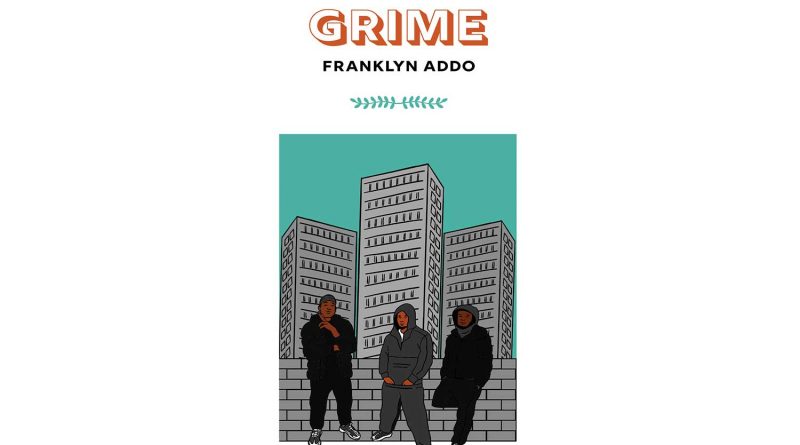Book review: A Quick Ting On: Grime by Franklyn Addo
From anti-social pastime to widely-respected creative art form, Addo’s debut book traces the nationwide reverberations of a music genre born on the bus routes of Bow.
Social commentator, journalist, youth worker and rapper, Hackney-born Franklyn Addo knows his way around the English language better than most. Whether he is writing opinion pieces in The Guardian, giving evidence in court as an expert on rap music and ‘urban’ language, or writing his own grime bars, Addo uses words to inspire and instruct on a daily basis.
His debut book, A Quick Ting On: Grime, offers an insider’s look into the genre’s cultural explosion from the housing estates of Bow to Glastonbury’s pyramid stage, and is coming out on Thursday 28 September.
Thirty-year-old Addo’s first-person narrative chronicles the history, present and future of grime music. Personal anecdotes, musical analysis and poignant social and political commentary give readers an insight into the early days of grime in East London before the genre saw any kind of label investment or mainstream interest.
The book is the fourth and most recent addition to the ‘A Quick Ting On’ (AQTO) series; a collection of non-fiction books about the Black British community. From afros to plantains and Black British businesses, according to series founder, Magdalene Abraha, the inspiration for the books is: ‘in many ways, home.’
Addo grew up on the Pembury Estate in Hackney and attended Cardinale Pole Secondary School near Victoria Park. He came of age as grime was coming alive on the bus routes and street corners of his East London neighbourhood.
If you’re familiar with the area you’ll likely recognise Bow’s infamous Crossways estate on the book’s cover, known locally as ‘the three flats’ to describe the trio of 25-storey tower blocks that Dizzee Rascal and Tinchy Stryder called home.
Addo’s musical sensibilities were formed by the debut albums of Dizzee and Tinchy, which he recalls listening to on a stuttering Sony Walkman before graduating to his first Nokia mobile and its superior audio capabilities.
In the book, Addo contextualises the early grime tracks that reflect his own realities of growing up in the East End, and analysing the raw and incisive social commentary that the music provides.
If you weren’t plugged into London’s contemporary music scene in the early 2000s, some British rap references might go over your head, but you don’t need to be a grime aficionado to enjoy or understand the book.
Addo’s accessible narrative allows readers a glimpse into grime at its grassroots, which has since survived and thrived in spite of a hostile culture and political terrain.
The chapters address different aspects of grime from its imagery to its political context and the economics of its distribution and consumption, but the book’s comprehensive structure reads fluently as a whole.
The inclusion of personal memoirs when discussing subjects like stop-and-search makes Addo’s social commentary all the more poignant. His memories of growing up in East London are inextricable from the music he was listening to, adding colour and context to his musical analysis that could otherwise risk falling on a few deaf ears.
The book, like the genre itself, is deeply connected to our local area of East London. Addo highlights how grime has popularised and given a language to the longstanding convention of MCs representing the neighbourhood where they have lived and socialised.
It traces the evolution of the genre from being viewed as an anti-social pastime to a legitimate and widely-respected form of creative expression. A transition which was powerfully symbolised in Stormzy’s takeover of Victoria Park’s All Points East festival on Friday, just a stone’s throw away from the birthplace of grime.
The most well-known grime artist today, Stormzy wouldn’t have thrived to the same extent without the foundations labouriously laid by preceding artists, to whom Addo pays homage in the book.
While acknowledging the great feat of rising from a hyperlocal grassroots genre to one that has proven its ability on a national level, Addo’s book is careful to point out the perceived notions of criminality that are associated with grime and more recently drill music in the UK.
Immersing readers into the world of grime and its story of adaptation and persistence, Addo’s narrative is far-reaching in its social commentary and will captivate grime superfans and newcomers alike.
Tracing the reverberations of grime throughout British society, the book paints a colourful picture of one of East London’s most significant cultural outputs and should be on the reading list of anyone who considers themselves an East Ender.
A Quick Ting On: Grime will be published by Jacaranda Books on Thursday 28 September.
If you enjoyed this piece, you might like be interested in a documentary about a life of grime and crime in Bow.







